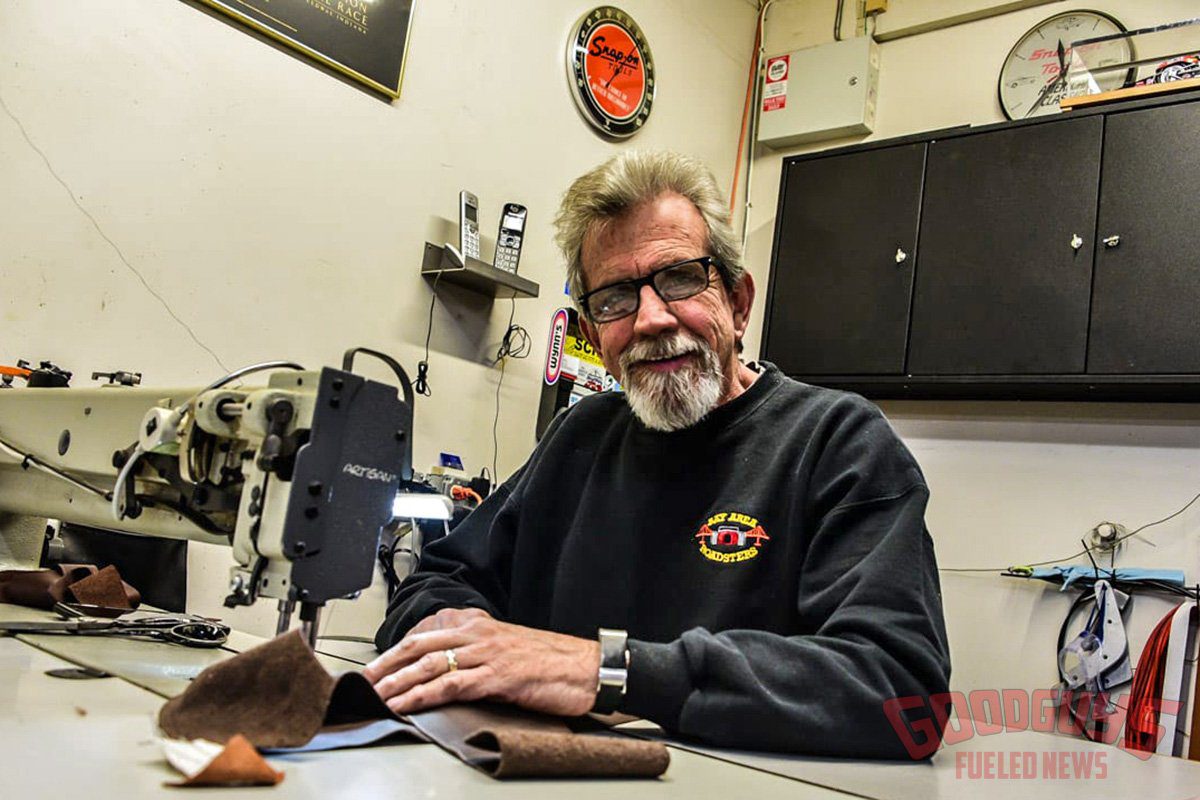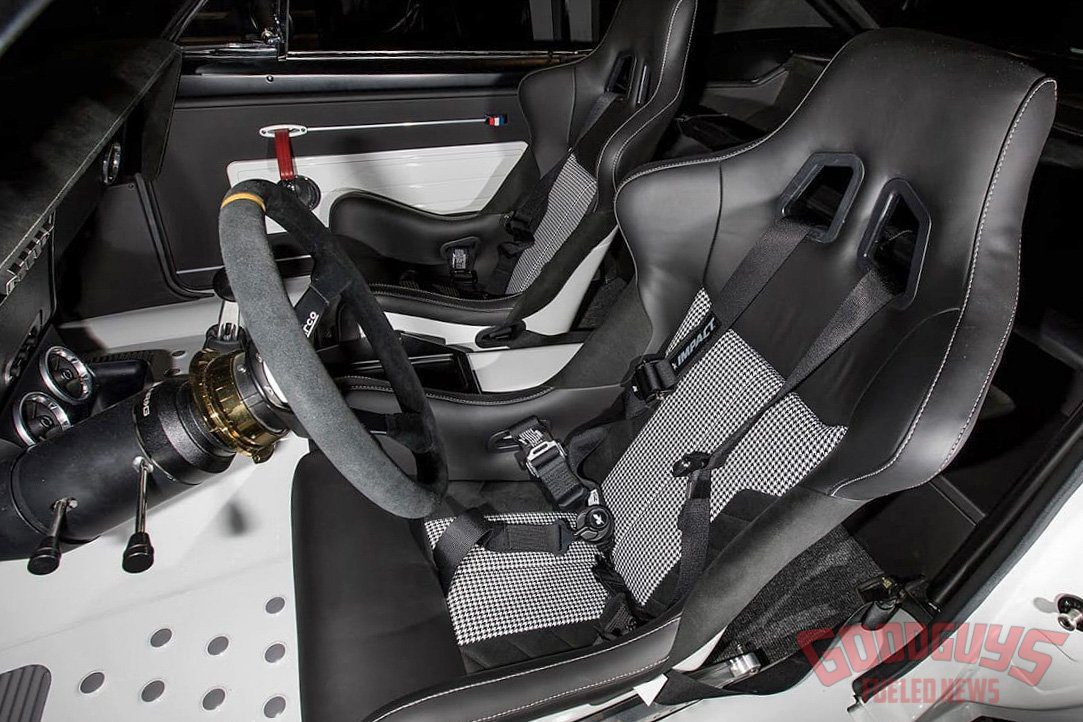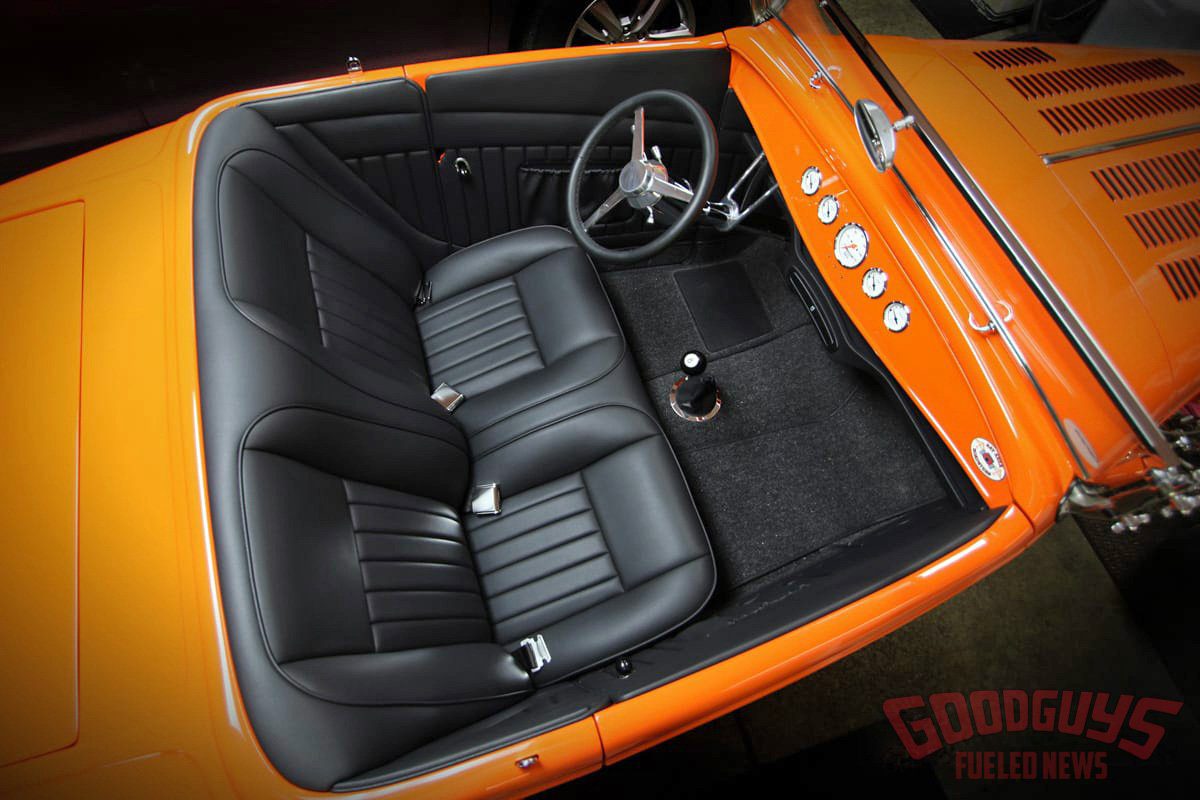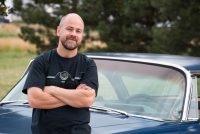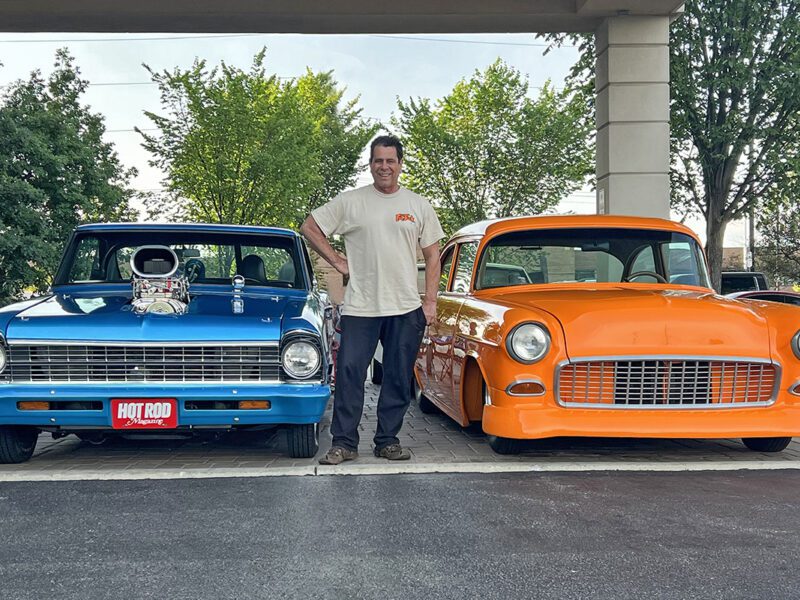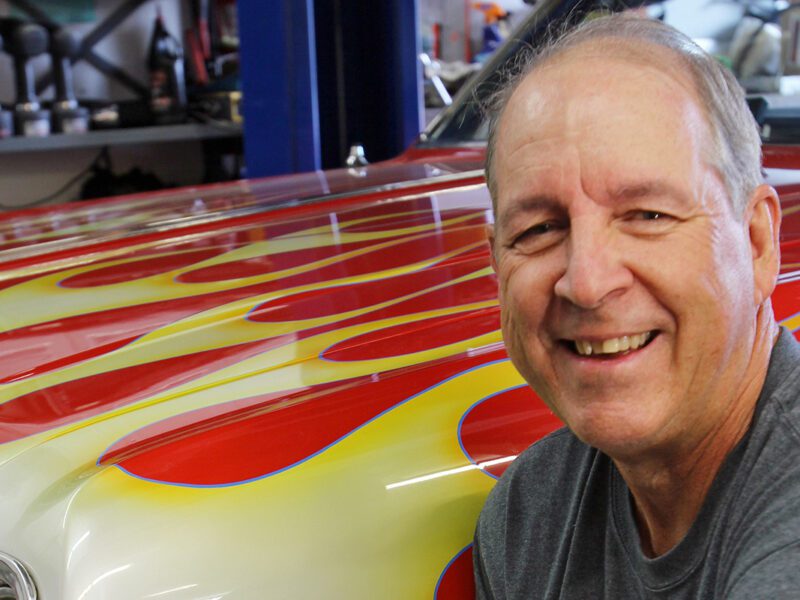5 Minutes With Sid Chavers
When it comes to hot rod upholstery, Sid Chavers is one of the most well-respected names in the business. A product of the San Francisco Bay Area, he’s been stitching award-winning hot rod, classic, and custom car interiors for more than 46 years and has upholstered countless rods and customs that have earned the industry’s top honors.
 Chavers is a self-taught, old-school craftsman. You won’t find CNC routers or other high-tech machinery in his shop – just the hand tools, sewing machines, and basic woodworking equipment that skilled trimmers have employed for decades. His classic, traditional upholstery work has an enduring style that matches the hot rods and customs it goes in. “To me, this traditional stuff was in style 50 years ago, it’s in style today, and it will be in style 50 years from now,” Chavers says.
Chavers is a self-taught, old-school craftsman. You won’t find CNC routers or other high-tech machinery in his shop – just the hand tools, sewing machines, and basic woodworking equipment that skilled trimmers have employed for decades. His classic, traditional upholstery work has an enduring style that matches the hot rods and customs it goes in. “To me, this traditional stuff was in style 50 years ago, it’s in style today, and it will be in style 50 years from now,” Chavers says.
We recently caught up with Chavers to discuss the ins and outs of an inside job and the pros and cons of tweed and Naugahyde. Be sure to also check out the shop visit on FuelCurve.com for a peek at where so many award-winning upholstery jobs get done.
Goodguys: What was your first car, and your first hot rod?
Sid Chavers: My first car was a ’53 Ford F100 when I was in high school 1969. I took out a $1000 loan so I could build the motor – a 390 with solid lifters and a Johnny DeLong Iskenderian-ground cam. My first hot rod was a 1932 Ford roadster – probably in 1983, ’84.
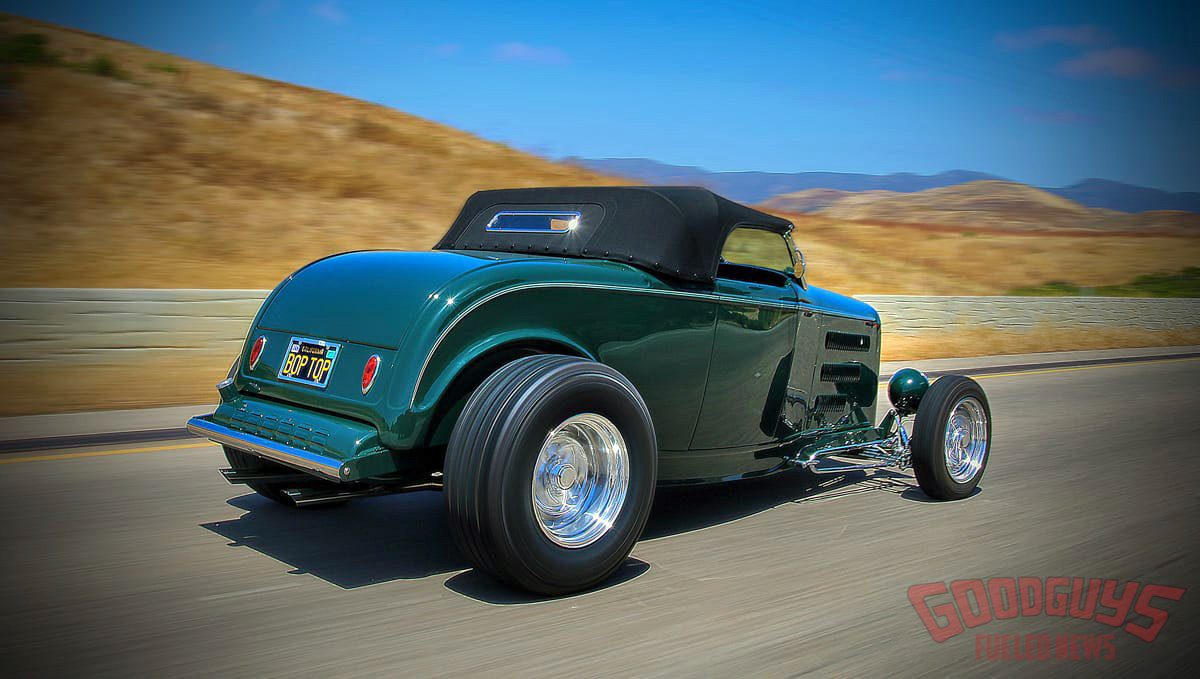
GG: Where did you learn to sew?
Chavers: My father and uncle had a company that manufactured motorcycle seat covers and sissy bar back pads, so I grew up around commercial sewing machines, plywood, and staple guns. Somebody in high school asked me if I could do his bucket seats and I said, “I don’t know – let’s give it a try!” As far as upholstering cars, it was all self-taught, other than the knowledge I got from my uncle and dad.
GG: How did that become a business?
Chavers: I helped my dad and uncle through high school. When I came out of the Navy, I helped my dad for another year, and then decided to open an upholstery shop. Everybody said, “you’ve never worked at an upholstery shop!” That’s alright – I can figure it out. I guess I figured it out.
My first shop was in Mountain View. There were two or three performance Porsche shops, so I started with old Porsches. There was a point I thought I’d upholstered every old 356 there was.
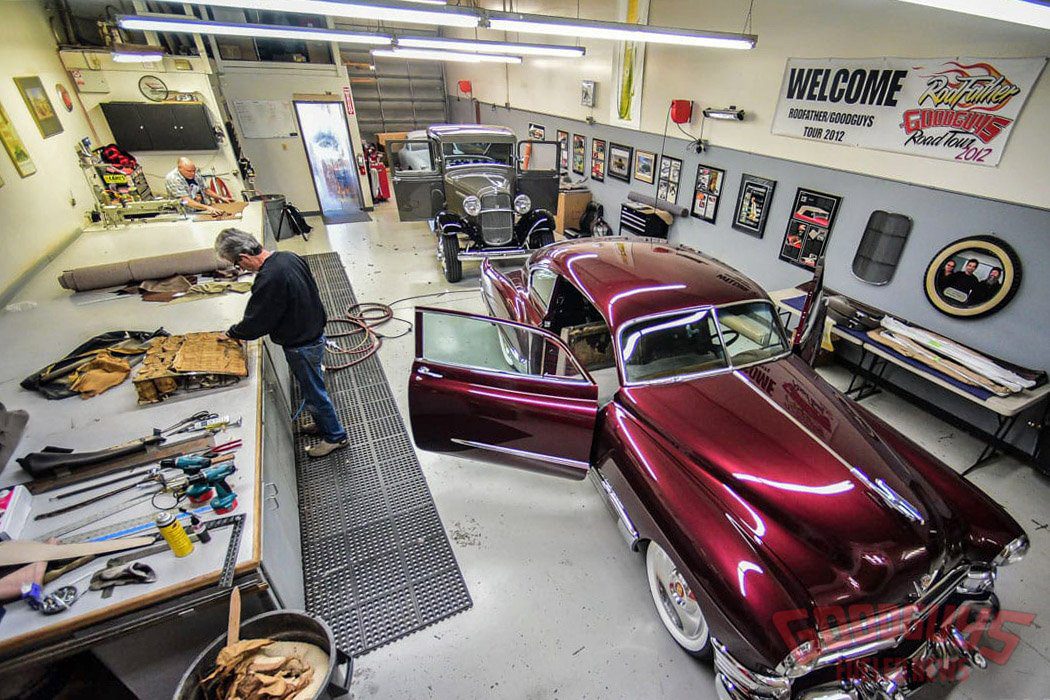
GG: We hear you earned a bronze medal in the Navy?
Chavers: That was a helicopter recuse we did in Yosemetie. Kings Canyon. A kid was stuck on a rock in this gorge and the river was raging by. They sent me down on the hoist to get him. We were having problems with the hoist and could only lift one guy at a time, so I had to trade places with him. Then I was stuck on the rock. They came back and got me.
GG: Your interiors have a classic look. Is there a trick to keeping them stylish without looking trendy?
Chavers: Somebody years ago coined the phrase “newstalgia.” That’s what I try to do. We want the old look done with today’s technology. Push it a little bit. Like, in 1932, if Henry would have had an ‘XL Deluxe’ model, what would they have done.

GG: As the last part of a hot rod build, interior guys are notoriously rushed. How do you avoid unreasonable deadlines?
Chavers: For many, many years we worked crazy hours. We were always slammed around the holidays. Thanksgiving, Christmas, New Years – we just didn’t get to celebrate them. We were working all the time. Eventually I got better at scheduling and controlling the situation. Now I tell everybody, if you don’t talk to me in April, the year before the Grand National Roadster Show, we’re not doing your car. I just say no. I still really love what I do, and I want to continue to love what I do.
GG: What’s something most customers don’t understand about upholstery work?
Chavers: How much fabrication and structure is involved. They see it all tucked and rolled and finished and think that’s just a seat that we put a cover on. No, we built that seat from scratch. Everything we make is precision fit.
GG: What’s your least favorite part of an upholstery job?
Chavers: I don’t know that I have a least favorite. At this point in my life, laying on your back under the dash is not enjoyable. A lot of guys don’t like making convertible tops. I love making convertible tops. That’s one of my favorite things to do.
GG: What recent upholstery trends have surprised you?
Chavers: There are shops now that have 3D printers and CNC routers, guys with 3D printers the size of my office. They’re printing full-size bucket seat frames. It’s pretty impressive. I think it’s beautiful, but it’s not me. I really love the real nostalgia stuff like we do.

GG: Do you ever miss tweed?
Chavers: From just a business point of view, man, I loved that tweed era. We’d knock those cars out. You’d just glue that stuff down, open the weave up and put a screw in where you wanted. It was simple. Now I look back and I’m like, oh my God, what were we thinking?
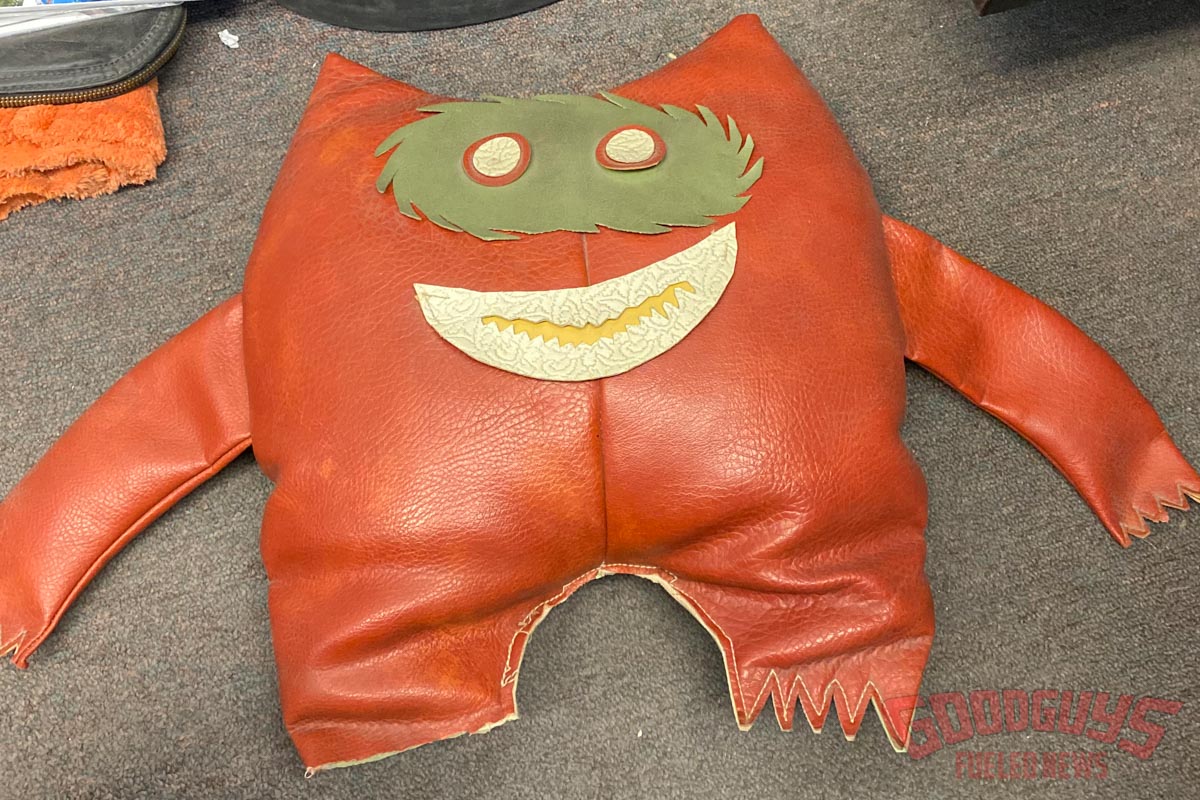 GG: Any advice for aspiring upholsterers?
GG: Any advice for aspiring upholsterers?
Chavers: I think it’s a wonderful industry. I have guys all over the country who call and ask for advice. One thing I tell younger guys is to take a small business class. Because you can be the best trimmer on the planet, but if you can’t run a business, you’re out of business.
GG: Do you still get requests for Naugahyde?
Chavers: Very, very seldom. I actually have a Nauga (shown right). It’s a promotional thing Naugahyde produced. It’s a little animal, so to speak. This is what had to be skinned so you could get Naugahydes.

